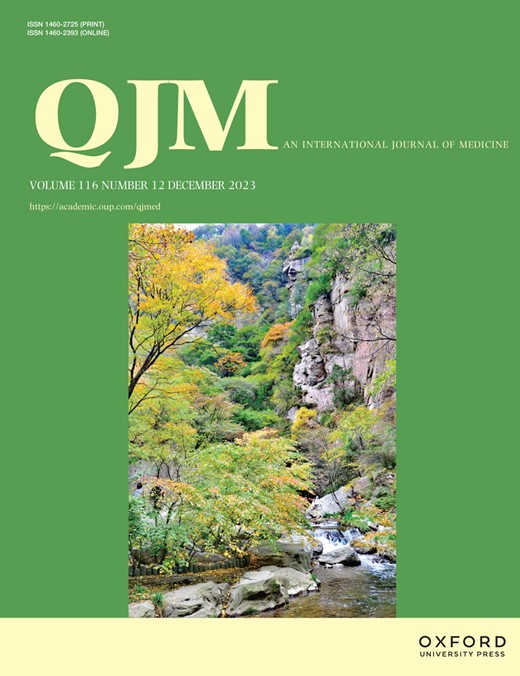纯合子家族性高胆固醇血症患者肝移植后皮肤黄瘤的消退。
IF 6.4
4区 医学
Q1 MEDICINE, GENERAL & INTERNAL
引用次数: 0
摘要
纯合子家族性高胆固醇血症(HoFH)是一种罕见的侵袭性代谢性疾病,其特征是低密度脂蛋白(LDL)水平升高和过早心血管疾病。患者在突变和临床表型方面存在异质性。我们提出一个病例36岁叙利亚妇女衰弱皮肤黄瘤已退化后肝移植。本文章由计算机程序翻译,如有差异,请以英文原文为准。
Regression of cutaneous xanthomata in a patient with homozygous familial hypercholesterolemia following liver transplant.
Homozygous familial hypercholesterolemia (HoFH), is a rare, aggressive metabolic disorder characterised by elevated levels of low density lipoprotein (LDL) and premature cardiovascular disease. Heterogeneity is seen among patients in relation to mutation and clinical phenotype. We present a case of a 36-year-old Syrian woman with debilitating cutaneous xanthomata which have regressed post liver transplant.
求助全文
通过发布文献求助,成功后即可免费获取论文全文。
去求助
来源期刊
CiteScore
6.90
自引率
5.30%
发文量
263
审稿时长
4-8 weeks
期刊介绍:
QJM, a renowned and reputable general medical journal, has been a prominent source of knowledge in the field of internal medicine. With a steadfast commitment to advancing medical science and practice, it features a selection of rigorously reviewed articles.
Released on a monthly basis, QJM encompasses a wide range of article types. These include original papers that contribute innovative research, editorials that offer expert opinions, and reviews that provide comprehensive analyses of specific topics. The journal also presents commentary papers aimed at initiating discussions on controversial subjects and allocates a dedicated section for reader correspondence.
In summary, QJM's reputable standing stems from its enduring presence in the medical community, consistent publication schedule, and diverse range of content designed to inform and engage readers.

 求助内容:
求助内容: 应助结果提醒方式:
应助结果提醒方式:


